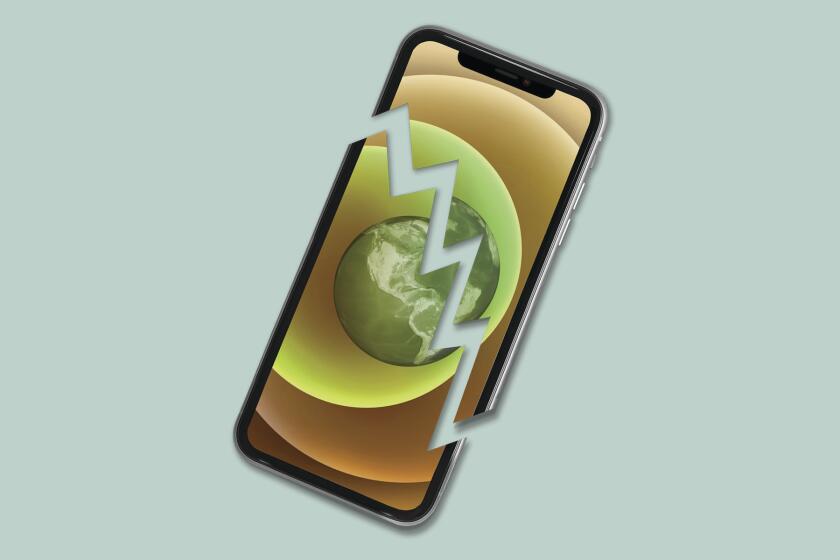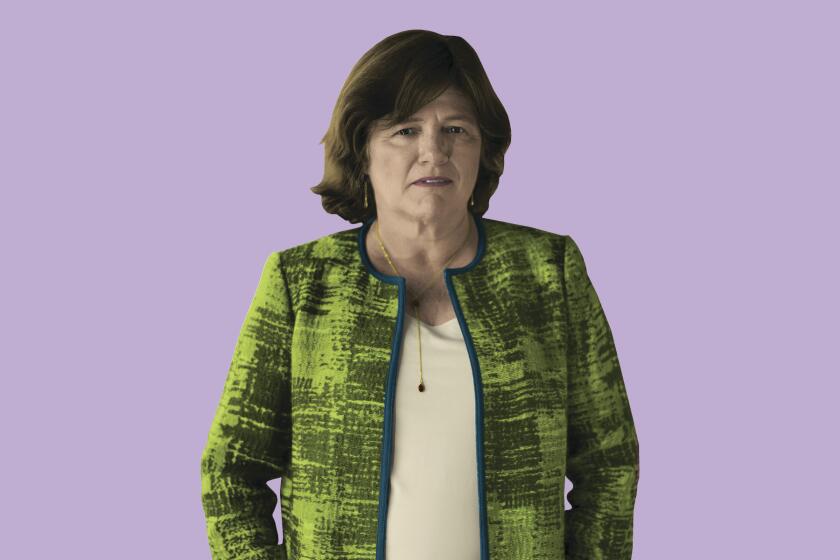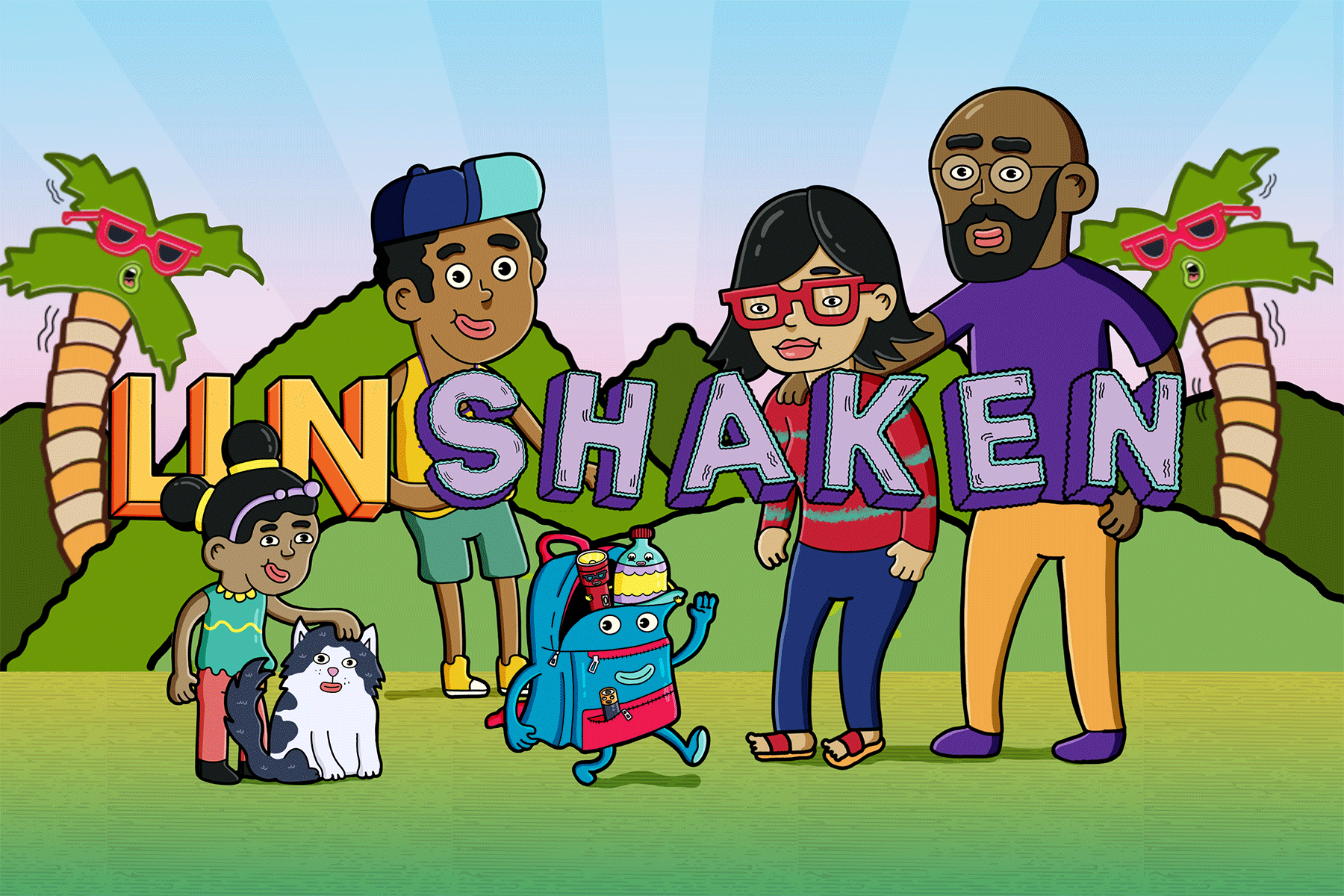These are some of the major earthquake risks facing California
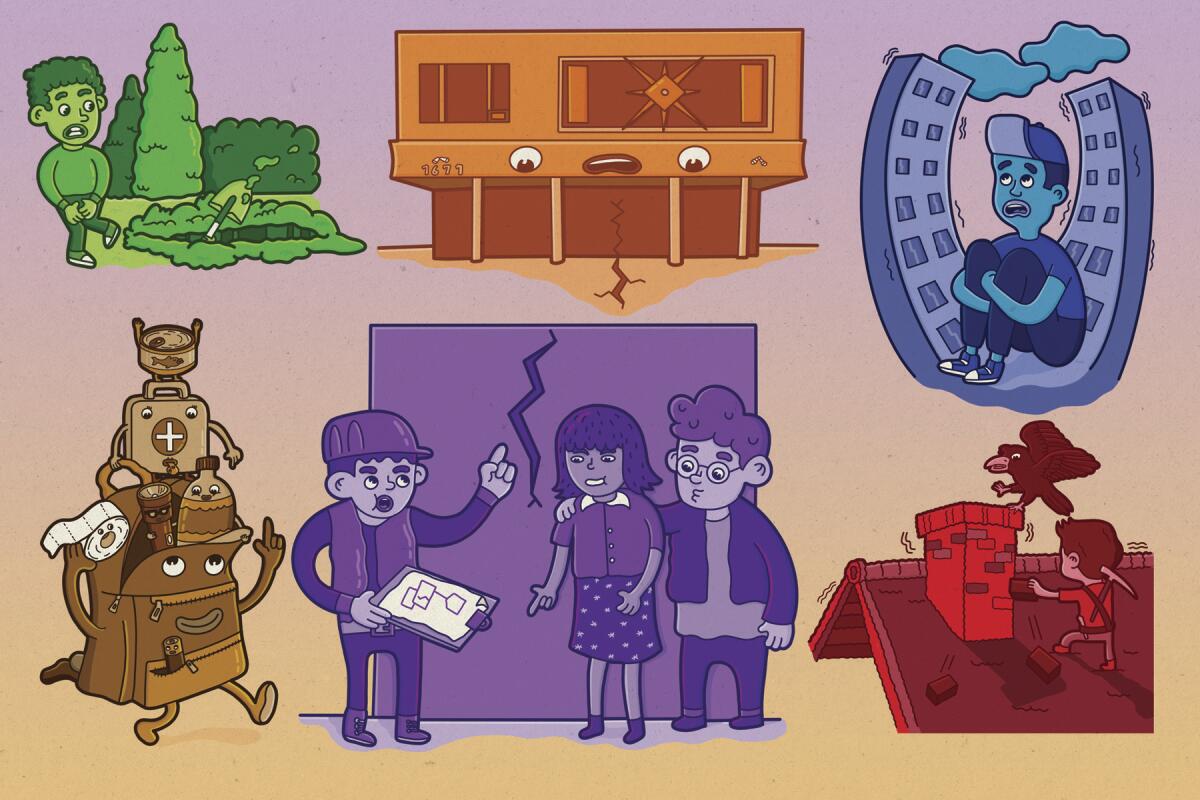
- Share via
It’s been three decades since two disastrous earthquakes shook California into looking more seriously at its seismic vulnerabilities. In 1989, Northern California was rocked by the Loma Prieta quake. Five years later, the Northridge quake hit Southern California.
There is no question California has made some significant improvements on seismic safety since then. The state moved to retrofit many freeway bridges and overpasses to better withstand violent shaking. A number of seismically resilient hospitals have risen across California, replacing ones that officials feared could collapse during a major temblor. Universities and other institutions have embarked on retrofitting efforts. After decades of stalling, some cities, including Los Angeles and San Francisco, are demanding property owners strengthen apartments and other weak buildings.
But vulnerabilities remain — and in ways the public does not always consider.
Here are some points that seismic experts believe California needs to address, from the pages of The Times:

1. Vital utilities fail
A huge earthquake in Southern California would cause massive damage — including some that would make recovery difficult.
Officials have warned that the region could see major interruptions in power, gas and other vital services due to quake damage.
One of the most ominous is the looming threat on the edge of Southern California’s sprawling metropolis — the Cajon Pass. It’s a narrow mountain pass where the San Andreas fault — California’s longest and one of its most dangerous — intersects with combustible natural gas and petroleum pipelines, electrical transmission lines, train tracks and Interstate 15 north of San Bernardino.
A huge earthquake on the San Andreas could move one side of the fault as much as 30 feet from the other. Such an earthquake would rupture flammable pipelines and lead to a catastrophic explosion so powerful it leaves behind a crater.
And if utilities aren’t able to shut off the flow of petroleum or natural gas, firefighters could be helpless to keep a raging wildfire from spreading across the San Gabriel and San Bernardino mountains, just as the rest of Southern California staggers from the worst earthquake it has seen in more than 150 years.
In recent years, there has been a campaign to do something.
One way to reduce the risk of catastrophe at the Cajon Pass would be to put shutoff valves on both sides of the San Andreas fault on petroleum and natural gas pipelines. If the pipelines are automatically turned off during the earthquake, it could prevent huge amounts of fuel from being ignited if the pipelines break.
Studies have shown that burst water pipes could leave parts of Southern California without running water for six months. Some experts point out that it’s impractical to retrofit all of Southern California’s water pipes with earthquake-resistant, flexible versions in our lifetime. But even some retrofitting would help. In certain situations, sewer lines could be unusable, and people would have to dig holes or use buckets to contain human waste.

2. Buildings collapse
There are several types of buildings experts say are at greatest risk of collapse or major damage.
They include brittle concrete towers ubiquitous in business districts such as downtown, Hollywood, Beverly Hills, and the Wilshire and Ventura boulevard corridors; wood apartment buildings with “soft” first stories (which usually house carports) like the one that collapsed in Northridge in 1994, killing 16 people; and steel skyscrapers, potentially.
A U.S. Geological Survey simulation of a magnitude 7.8 earthquake in Southern California said 50 brittle concrete buildings housing 7,500 people could completely or partially collapse and that it was plausible that five high-rise steel buildings — of a type known to be seismically vulnerable — holding 5,000 people could completely collapse.
Disruptions from a major quake would be serious and long-lasting. Here’s what could happen in Southern California if a large earthquake struck on the San Andreas fault.
Some cities have taken significant steps to make those buildings safer by requiring costly retrofitting aimed at protecting those inside and preserving the housing supply. But many others have ignored the seismic threat. And that has created an uneven landscape that in the coming years will leave some cities significantly better prepared to withstand a big quake.
Los Angeles and San Francisco have been aggressively requiring retrofits of apartments and concrete buildings. And there is a success story they can point to from the past.
Los Angeles was one of the first cities in California to require retrofitting of unreinforced brick buildings. Of about 8,000 buildings, almost all have been retrofitted or demolished since a 1981 law. In some cases, Los Angeles officials had to go to court and threaten to label a building as unsafe, barring anyone from being inside it.
No one died from brick-building damage in the 1994 Northridge earthquake.

3. Foundations and chimneys
Older single-family homes, by and large, are considered safer than bigger brittle concrete, unreinforced masonry and soft-story apartment buildings.
But there are some risks — and solutions that experts have urged homeowners to consider. Brick chimneys are one: They account for a common form of damage during larger California quakes.
When chimneys collapse, bricks can become deadly projectiles. At least 15,000 brick chimneys were damaged in Los Angeles during the 1994 Northridge earthquake. In Napa in 2014, about half of residential buildings damaged were due to brick chimneys.
Get earthquake-ready in six weeks
From building a kit to buying insurance, our Unshaken newsletter course will help you prepare.
You may occasionally receive promotional content from the Los Angeles Times.
Many California cities prohibit putting unreinforced brick chimneys in new homes. Others, including Los Angeles, have imposed stringent requirements that discourage homeowners from using brick.
Older brick chimneys — generally those built before 1980 — are too stiff and brittle to withstand major shaking. The mortar holding them together can be ground down.
Across California, older brick chimneys are generally not required to be reinforced, and few have been strengthened or replaced.
Minimal retrofitting options for a single-family house usually cost less than $5,000.
To keep bricks from falling through the roof during an earthquake, one option is to add layers of plywood on the roof around the chimney. Another is to remove the upper part of the chimney, which can twist and turn during shaking, and replace it with metal. A third option is to add a diagonal steel brace to the chimney.
Even with those improvements, the chimney still could collapse. A more extensive retrofit, which could cost tens of thousands of dollars, involves removing the chimney or rebuilding it.
If the homeowner doesn’t need the chimney to be functional, the retrofitting could be as simple as placing a steel tube down the structure and filling it with concrete.
There are an estimated 1.2 million California homes with a deficiency that can render them unlivable after strong shaking. It involves houses built before 1980, but especially before 1940, that are a few steps off the ground and have a crawl space between the living space and the ground the house sits on.
The problem is the homes haven’t been properly braced and bolted to the foundation. Walls and wood beams that keep the house off the ground aren’t fastened tightly to the ground, and the lack of grip can cause the home to be shoved off the foundation — as if the shaking has broken the building’s knees and a rug has been pulled from underneath the home.
The basic fix involves bolting or anchoring the house to the foundation and adding plywood around the flimsy crawl space. In Southern California, the typical cost for a bolt-only retrofit is about $3,000 to $3,500; the median cost for a house that also needs plywood is $3,900.
Southern California’s housing stock and propensity for earthquakes mean homeowners here need to pay special attention to foundations, chimneys and more. Here’s your guide to retrofitting.
This type of home is quite common throughout areas of California at high risk for significant shaking. In the magnitude 6 earthquake that hit Napa in 2014, retrofitted houses rode out the quake fine, but some that were not strengthened were so damaged that residents were forced out of their homes.
Though a retrofit can cost thousands of dollars, repairing a broken house after an earthquake can cost hundreds of thousands.
The retrofit takes about two or three days, requires a local government permit and can be performed by a contractor or a knowledgeable do-it-yourselfer.
A directory of contractors who have taken a free online Federal Emergency Management Agency training course on seismic retrofits of homes is on the state’s website; officials recommend homeowners obtain at least three bids before choosing a contractor.

4. Mental health toll
When a big earthquake strikes, the public’s attention immediately goes to the physically injured, the dead or collapsed buildings. But something else also starts: the toll on mental health.
Traumatic stress rises in the aftermath of a disaster, researchers say. One study examining survivors of 10 disasters found that one-third had a post-disaster diagnosis — with post-traumatic stress disorder being the most prevalent (20%), followed by major depression (16%) and alcohol use disorder (9%).
Worsening mental health has been documented in a number of recent disasters, including the aftermath of Northridge and the magnitude 6.2 earthquake in New Zealand in 2011.
Deteriorating mental health can sometimes be obscured by the phases of a disaster. Immediately after a disaster, researchers have documented that there can be a community emotional high as people enter into a heroic rescue mode, followed by a honeymoon period where a community bonds and there is unrealistic hope that everything can return to normal quickly. But then there can be a long phase downward, and it can be accompanied by stress, exhaustion and fatigue.
Experts say it’s important that officials recognize the looming public mental health crisis before a disaster strikes. After the Feb. 22, 2011, Christchurch earthquake, some say mental health services fell short and people suffered. Others say they got good care, and in subsequent years, public health officials embarked on an innovative public mental health campaign called “All Right?” that sought to improve the community’s mental health — a tactic that came back to prominence after shootings at mosques led to the deaths of 51 people, New Zealand’s worst mass killing in its modern history.
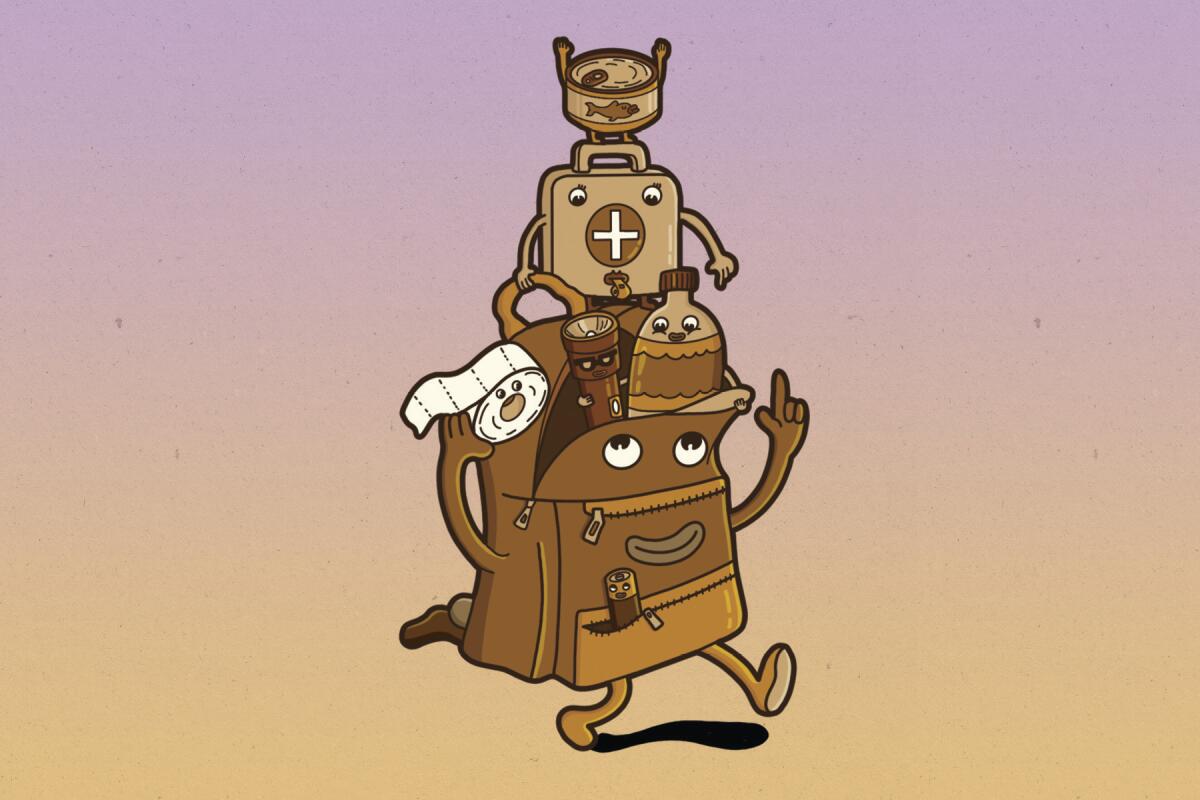
5. Supplies
As the pandemic demonstrated, our just-in-time economy is vulnerable to disruptions and shortages of supplies that can suddenly come under heavy demand, whether it be paper masks or toilet paper.
Residents are urged to stock up on key supplies: ample water (a gallon a day per person and per pet), food, medications, spare eyeglasses, warm clothes and blankets. A stockpile of food, water and medicine should last at least three days but ideally for at least two weeks.
You may also want to consider having a shovel or bucket handy — an extensive outage of water or sewage service could result in people needing to dispose of human waste in their backyard, if they have one.
The widespread and lengthy power outages in Texas in February, sparked by intense winter storms, show just how critical it is to be prepared with supplies. Food supplies dwindled as power outages lasted far longer than most people expected.
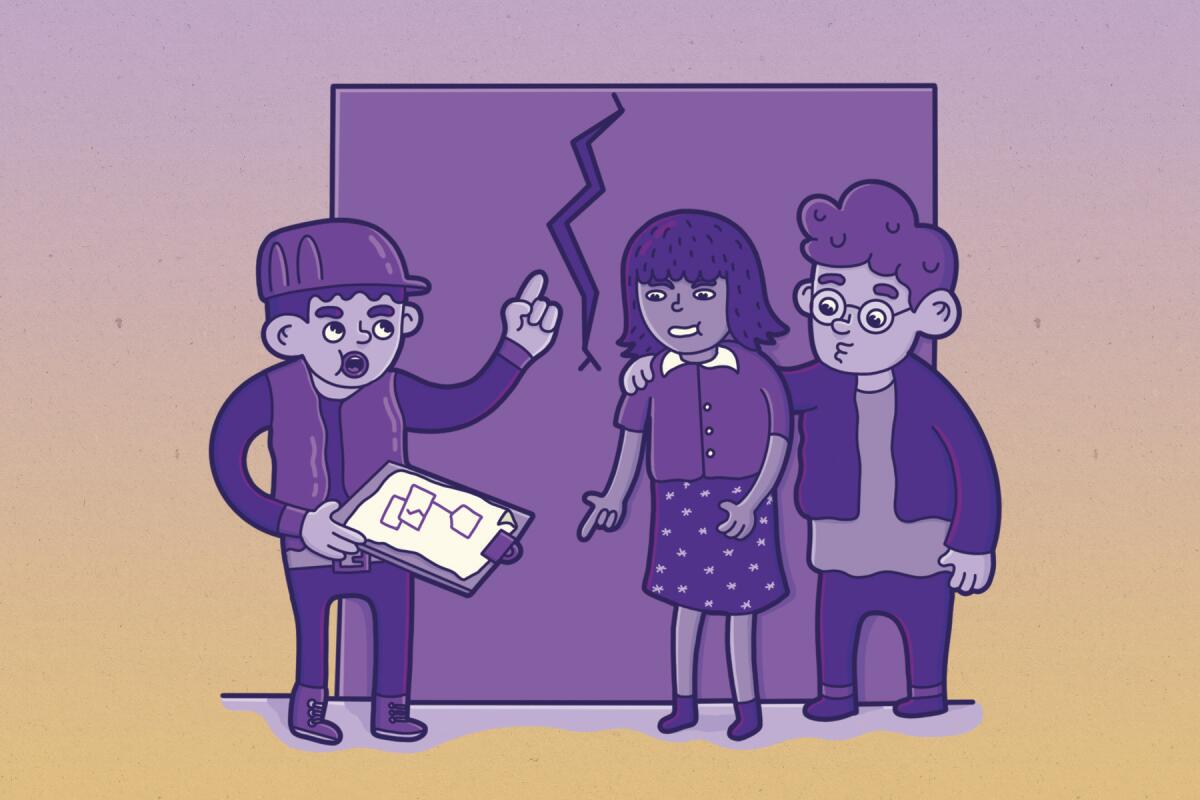
6. A vulnerable economy
Households, businesses and local governments should come up with plans on how they’ll deal with a disaster when it comes.
Do people have enough savings to ride out a few months of economic instability? Do homeowners and renters have earthquake insurance, which will help pay for hotel stays if your home is uninhabitable?
Can local, state or federal governments be ready to hand out stimulus checks to keep businesses running and people paid, as New Zealand did when Christchurch was hit with an earthquake in 2011? And are local officials ready to make tough but speedy decisions on how their post-quake city will look?
You don’t want to scare your kids, but you do need them to be prepared for what to do before, during and after the shaking of a major (or even minor) earthquake.
7. Communications out
There hasn’t been a major quake in California since cellphones, smartphones and WiFi became ubiquitous. When the destructive Northridge quake hit in 1994, landlines still ruled and the internet wasn’t yet a central part of people’s lives.
Cell service can be crucial to the ongoing function of a society during and after a crisis. Widespread outages of cellphone networks after hurricanes or major storms have been a consistent problem in the United States, interfering with recovery efforts. In Puerto Rico after Hurricane Maria in 2017, residents roamed roads searching for signal; cellphone towers on the East Coast were disrupted after Superstorm Sandy in 2012.
In Japan, it is required that cellphones have a 48-hour backup power supply, said seismologist Lucy Jones, author of “The Big Ones: How Natural Disasters Have Shaped Us (and What We Can Do About Them).”
There was some discussion as to whether such a standard should be required in Los Angeles to prepare for earthquakes; but it became clear several years ago that neighborhood groups would oppose having diesel-powered generators at wireless tower sites, which would need to be tested monthly.
People are much more important than kits. People will help each other when the power is out or they are thirsty. And people will help a community rebuild and keep Southern California a place we all want to live after a major quake.
A prolonged power outage — and lack of cell service — can cause major problems for recovery. The hardest-hit areas in Japan after the 2011 earthquake and tsunami ran through the 48 hours of backup supply. The power wasn’t coming back soon, and that’s when people gave up and started leaving the area.
In 2015, Los Angeles became the first city in the nation to approve seismic standards for new cellphone towers, part of an effort to strengthen communications infrastructure in preparation for the next big quake.
The Los Angeles plan requires new freestanding cellphone towers to be built to the same seismic standards as public safety facilities. Cellphone towers are conventionally built only strong enough to not collapse and kill people during a major earthquake. They’re traditionally not required to be strong enough to continue working.
8. The inside of your home.
The inside of homes can offer many hazards that can become potentially deadly projectiles in an earthquake, like an unstrapped bookshelf or clothes dresser or an unsecured TV or microwave.
Fixes before the shaking begins can be easy and cheap: A trip to the hardware store or online can offer people tools to strap bookcases to walls and mount TVs.
Earthquake preparedness is about communication, resilience and understanding and mitigating your risks. Our newsletter course will teach you how.
More to Read
Get earthquake-ready in six weeks
From building a kit to buying insurance, our Unshaken newsletter course will help you prepare.
You may occasionally receive promotional content from the Los Angeles Times.
